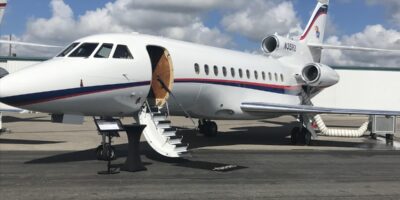Crew Management in Airlines: An Informative Guide
Effective crew management forms the backbone of any successful airline operation. The tasks involved in managing flight and cabin crew range from scheduling and training to compliance and welfare. Each component plays a vital role in ensuring smooth operations and a positive experience for passengers.
Importance of Crew Management
Reducing flight delays, maintaining crew morale, and adhering to regulatory standards are crucial for any airline. An efficient crew management system helps to balance these elements seamlessly. This balance is essential for optimizing costs and maximizing operational efficiency.
Scheduling and Rostering
Creating efficient schedules for pilots and cabin crew represents one of the most critical aspects of crew management. Scheduling software often incorporates complex algorithms that take into account flight hours, layovers, and regulatory compliance. Such software ensures that the crew is well-rested and fit for duty.
Pilot and crew fatigue can compromise safety. Therefore, adherence to work-hour regulations is non-negotiable. Advanced software systems flag potential risks and scheduling conflicts to prevent overworking crew members.
Training and Development
Regular training updates ensure that all crew members are proficient and capable in their roles. Training includes initial certification, recurrent training, and specialized courses for specific aircraft types. E-learning platforms have become increasingly popular, offering flexibility for crew members to complete their training modules.
The focus on training also covers soft skills such as customer service and conflict resolution, which contribute significantly to passenger satisfaction. Training modules are continually updated to reflect changes in regulations and industry practices.
Compliance with Regulations
Regulatory bodies such as the Federal Aviation Administration (FAA) and the European Union Aviation Safety Agency (EASA) enforce strict guidelines on crew management. Airlines must adhere to these standards to avoid penalties and ensure passenger safety. Keeping up with these regulations requires dedicated software that can track compliance in real-time.
Maintaining accurate logs of crew hours, training certifications, and medical records are essential tasks. Regulatory compliance ensures that airlines remain in good standing and operate safely.
Welfare and Well-being
A crew’s mental and physical well-being directly impacts their performance. Airlines often use surveys and feedback tools to gauge crew satisfaction. Addressing common concerns such as work-life balance and onboard working conditions is key. Support systems that include counseling services and health programs are becoming more integrated into crew management strategies.
Technological Integration
Automation and digital tools have revolutionized crew management processes. Software platforms facilitate real-time updates on schedules, training needs, and regulatory compliance. Integration with mobile apps allows crew members to access their schedules, training modules, and support resources from anywhere.
Data analytics and artificial intelligence (AI) further enhance decision-making. Predictive analytics can forecast potential scheduling issues and crew shortages, enabling proactive management.
Communication Systems
Clear and effective communication is paramount. Airlines employ various communication tools to ensure that information is disseminated quickly and accurately. These tools include intranet systems, mobile apps, and integrated communication platforms that link various departments.
Instant communication helps to manage last-minute changes, such as delays or crew reassignments, more efficiently. It also ensures that all crew members are kept in the loop about important updates and procedural changes.
Cost Management
Efficient crew management can lead to significant cost savings. Proper scheduling reduces the need for overtime payments and minimizes the risk of flight cancellations or delays. Streamlined training processes cut down on costs while ensuring that the crew remains compliant with industry standards.
Additionally, predictive maintenance schedules based on crew reports can prevent costly aircraft downtimes. Efficient crew management systems also manage layover logistics, reducing unnecessary expenditures.
Challenges and Solutions
Handling last-minute changes due to unforeseen circumstances such as weather disruptions or crew illness is a common challenge. Real-time communication and an adaptive scheduling system can minimize disruptions. Crew pairing algorithms also ensure optimal crew combinations for various flights.
Managing a multinational, multilingual crew requires a nuanced approach. Airlines often provide cultural sensitivity training and language support to foster a cohesive work environment. A strong HR support system can address diverse crew needs effectively.
Future Trends
Virtual reality (VR) and augmented reality (AR) are set to transform training modules. Enhanced simulations offer more immersive and effective training experiences. Machine learning algorithms will further refine scheduling and predictive maintenance operations.
The rise of electric and hybrid aircraft will influence crew training and operational protocols. Staying ahead of these trends is crucial for sustained success in the airline industry.
“`



